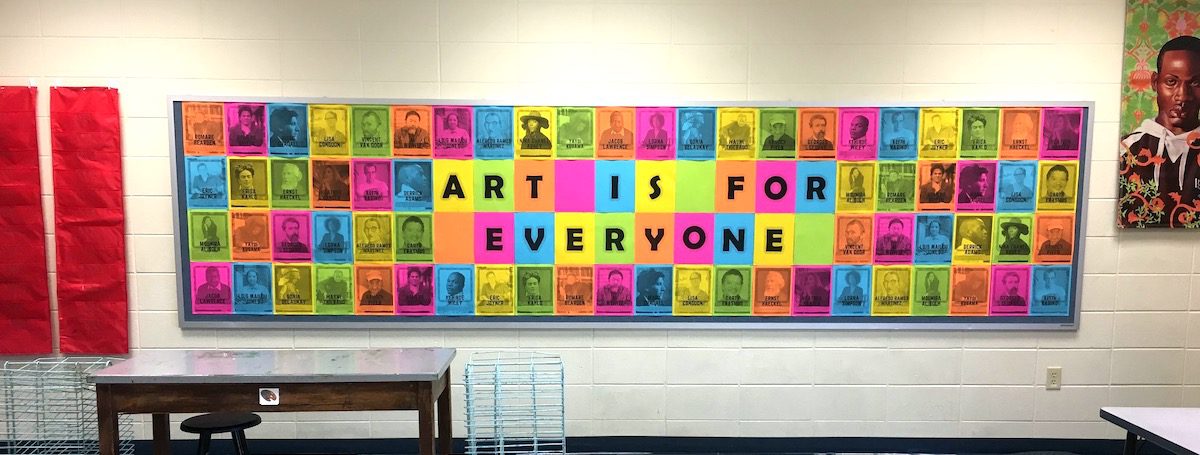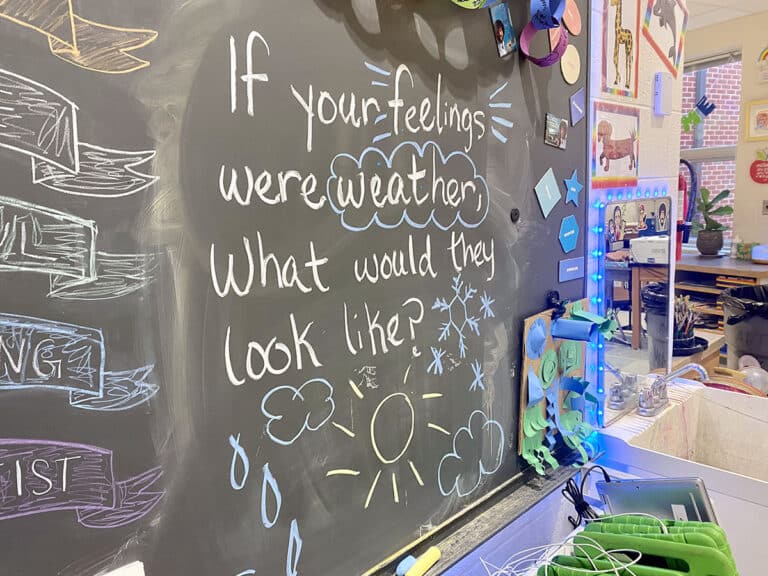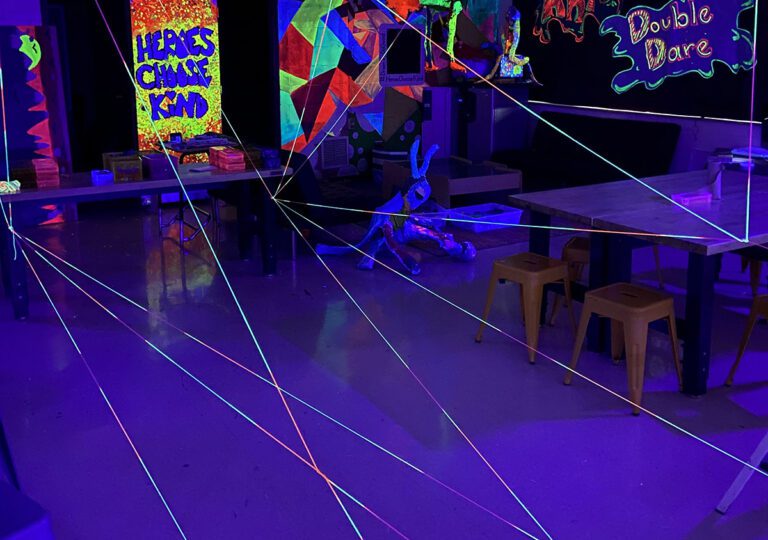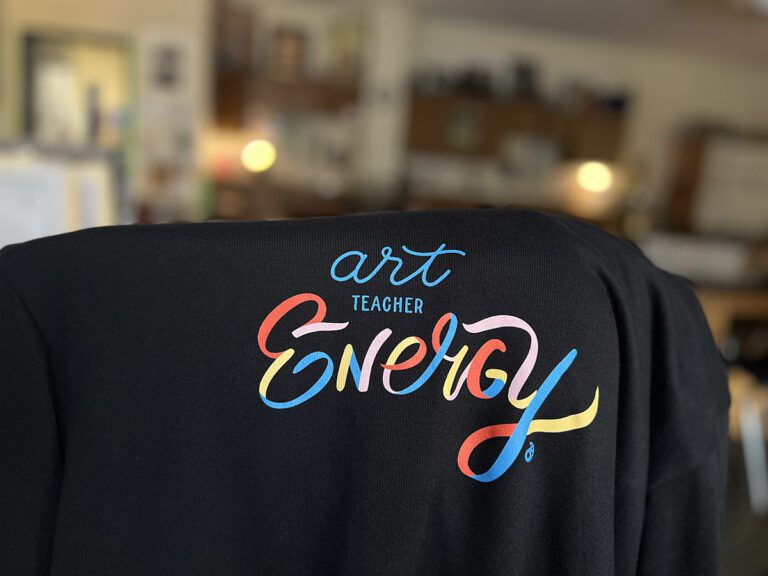The following article is written by an art educator working in a district that supports inclusive practices. The article is written from that experiential lens. We recognize that it may not be safe or permissible to engage in these discussions at your school. We encourage you to keep your safety, your students’ safety, your district regulations, and the parents in your community in mind at all times.
As art educators, we not only want students to create art, but we also hope to create a learning environment where every student feels included, valued, and encouraged. The desire to create a positive experience in an inclusive art room drives everything we do. Our students know they are valued and represented in their learning. They can create personal art inspired by a diverse variety of artists and themes. In an inclusive art room, students learn and thrive from identifying similarities and celebrating differences in others.
What is an inclusive art room?
An inclusive art room is developed when a teacher takes into consideration the needs of all students. The teacher ensures students of all backgrounds are not only tolerated and respected but are actively included in the classroom environment and curriculum. Art, in particular, provides teachers with a unique opportunity to give positive representation to diverse populations. Teachers can incorporate artists and themes to connect with students from marginalized groups while showing all students everyone is valued.
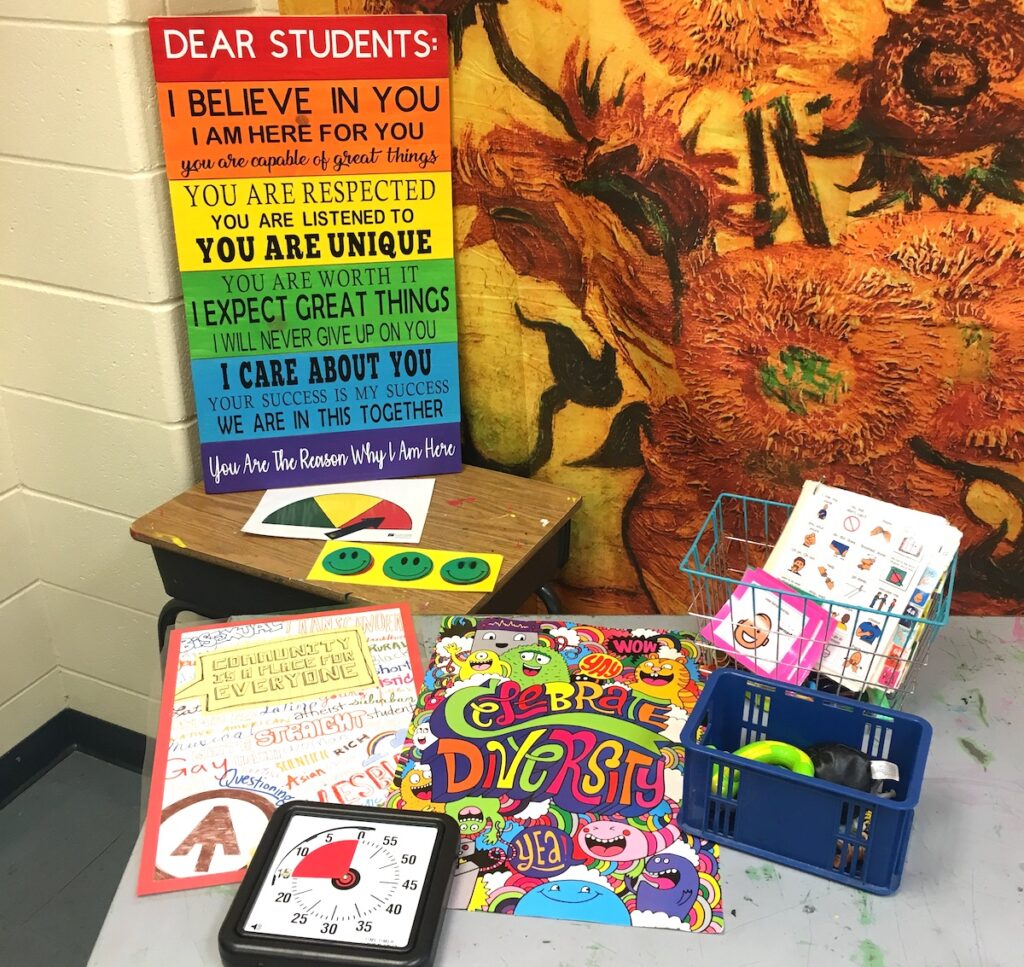
Why is inclusivity important?
When art teachers strive to create an inclusive art room, it shows they understand the impact acceptance, respect, and validation have on a student’s learning potential. Many of us can understand how feeling valued can impact our self-esteem. It transfers into how we work, learn, and create. Imagine the impact if all of your students felt this way when they come into your art room. The weight of fear, insecurity, and pain could be lifted from your students if you make an effort to demonstrate that you see and value them as unique individuals.
All students can benefit from a safe and inclusive learning environment. Some of your students may not identify with a minority or marginalized group. By including as many students as possible, everyone can learn from a variety of perspectives and become a more well-rounded individual and artist.
Not every group will be visible or known to you. Some students may not share that they are an English language learner (ELL.) Other students may be coming to terms with their sexual orientation or gender identity. If you want to develop a truly inclusive art room, strive to include everyone, whether your student population reflects each diverse group or not.
For more on creating an inclusive art room, check out the Packs, Celebrating Diversity Through Contemporary Art and Strategies for English Language Learners in PRO Learning.
Create inclusive lessons.
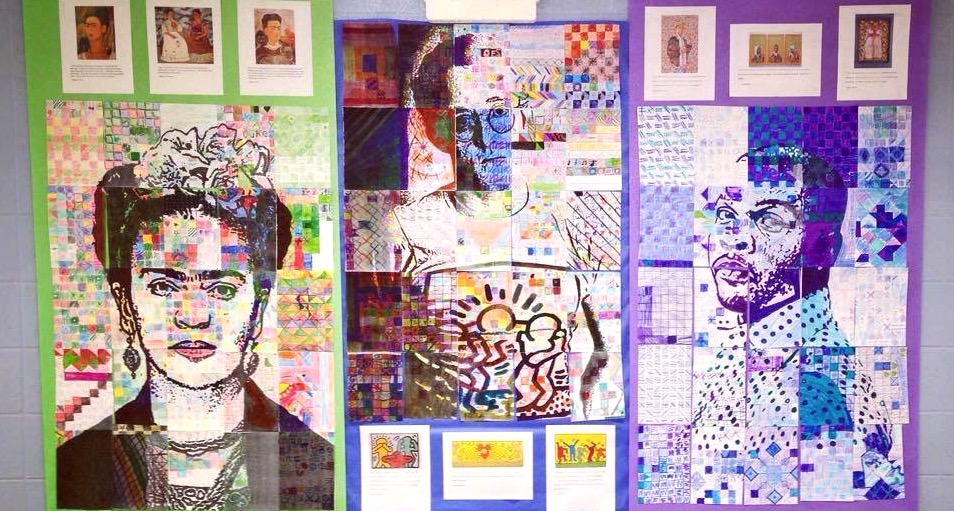
The lesson planning process for an inclusive art room is key because you can’t simply say you respect and value all students and then exclusively teach them artists and issues of the status quo. Think of the saying, “Actions speak louder than words.” Yes, having inclusive posters and images around the room is a great start, but the heart of your classroom is the learning! Your curriculum should reflect your belief that all students should feel valued and included.
Take a look at your curriculum. Consider asking yourself these two questions:
- Which artists are represented?
- Do you have a variety of groups represented?
Think about how presenting artists from an even wider variety of life circumstances can benefit your students. Art is for everyone and is made by everyone. Show your students how! You’ll create an inclusive environment and inspire your students of all backgrounds.
When selecting or planning activities for your students, look for what’s missing in your existing curriculum. Who isn’t represented? Start incorporating examples of artists from these groups. They may fit well into a unit you already teach. For example, you may demonstrate the same skill, but change the artist or pair the artists together. By adding more diverse representation to your curriculum, you’re already beginning to show students they are valued in your art room.
Have difficult conversations.
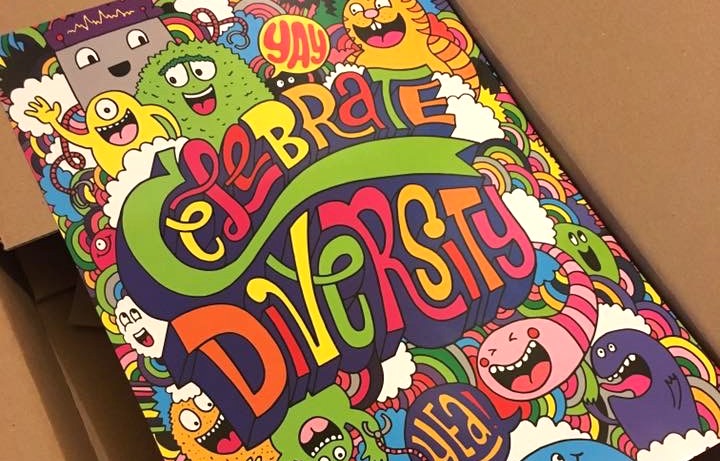
Sometimes adding diverse perspectives to your curriculum can lead to some tough conversations and conflicting viewpoints. Even at the elementary level, class discussions can open up about race and stereotypes. These conversations may be uncomfortable, but they are necessary. By asking students to think about their comments and explain them, growth can occur. The biggest impact may be when students call each other out or have their own dialogue. Of course, with different age levels and in different communities, these conversations can be more difficult. You, as their teacher, know your students and how to facilitate a class discussion where each student’s voice is valued and respected.
Sometimes these conversations can lead to inquiries outside of the classroom from parents, staff, or even administration. When faced with any question or concern from others, firmly explain your learning objectives and the rationale for why it’s important. Ask them questions as to why they are opposed to what you are teaching. This will help you gain some understanding of their perspectives. Respond to their concerns. Inclusion is not a political weapon; you are simply trying to show respect and value to everyone, in and outside your art room.
Foster inclusivity in the physical environment.
The physical environment of an inclusive art room is another way you can show your students you value people from a wide variety of groups and life experiences. Posters of artists and/or their work are a great way to represent diversity in your art room. You could also display posters with quotes or statements that explicitly say your room is a safe space for all people.
Several companies and organizations produce such posters, but you can also create your own! Look at your own curriculum for inspiration for artists or quotes you could put up in your room. If you can’t find a poster that says precisely what you want to communicate with your students, do it yourself! Whatever your teaching philosophy or mission statement is, share that with your students. Let each class know exactly how you feel about them and your desire to include them in your art room.
You can advocate and support many subgroups of students by how you structure the physical environment of your art room and by the diverse lesson plans you teach. Think of the impact you can have on a student with a physical special need when you include an artist like Henri Matisse. The famous French artist continued to create art after surgery left him confined to his bed and a wheelchair. Frida Kahlo’s story of perseverance to paint after contracting polio and suffering numerous injuries is another great example to share with students. Positive representation matters and can be incredibly inspiring to your students. Each student deserves to see themselves reflected in your art room and your art curriculum.
How do you define an inclusive art room?
What lessons, accommodations, or visuals have you used in your inclusive art room?
Magazine articles and podcasts are opinions of professional education contributors and do not necessarily represent the position of the Art of Education University (AOEU) or its academic offerings. Contributors use terms in the way they are most often talked about in the scope of their educational experiences.
